How To Use A Foam Roller: Self-Myofascial Release Explained
Learn how to use a foam roller and help your muscles recover post-workout with soft-tissue massage techniques
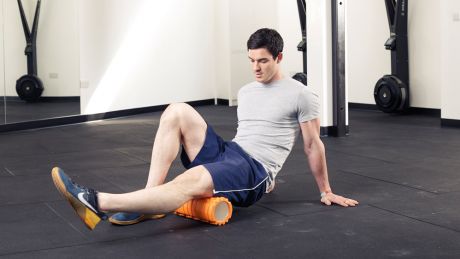
There are some things it’s impossible to do: lick your own elbow, sneeze with your eyes open, or tickle yourself. But one thing you can do is give yourself a sports massage without having to pay a professional masseuse, thanks to the foam roller.
Foam rolling – or self-myofascial release, as it’s also known – is like getting a sports massage, except foam rollers come at a fraction of the cost of a masseuse. Also, unlike a masseuse, they can be popped in a cupboard or under a bed to use again tomorrow.
As well as being useful for helping your muscles to recover after an intense workout, a foam roller can also prepare your body before a big match or training session. While they can be painful to use, and take a little getting used to, if you stick with it you’ll quickly come to value foam rolling as an essential part of your weekly training routine.
There are three main types of foam roller to choose between: smooth, trigger point and vibrating. A smooth roller is usually gentler and works well if you’re new to self-myofascial release, though be aware that even if you opt for a “softer” smooth roller it will still feel uncomfortable.
Trigger point rollers have spikes, ridges and other kinds of nobbles so they can dig deeper into your muscles. The pattern will often be designed to mimic the different parts of a masseuse’s hands – long tubular parts for fingers, large flat sections for plans, and smaller spikes for fingertips.
You can get smooth or nobbled vibrating rollers, but of course the main feature here is the vibrations, which are meant to enhance the usual benefits of foam rolling. However, the price will be higher if you do want a vibrating roller.
You’ll find recommendations for all three types in our round-up of the best foam rollers.
Get the Coach Newsletter
Sign up for workout ideas, training advice, reviews of the latest gear and more.
The Benefits Of Using A Foam Roller
Compared to stretching, the agony of rolling can feel like some kind of torture the exercise industry are inflicting on us as a joke, but it really does work. Applying pressure to trigger points, or knots, in your muscles boosts blood flow, helps them recover their elasticity quickly and sets you up to go again. Just two minutes of self-myofascial release increases your muscles’ range of motion by 10%, according to a study published in the Journal Of Strength And Conditioning Research.
In addition, while giving yourself a massage might sound immeasurably less fun than lying down and letting a pro do it, the self-control offered by foam rolling allows you to control your recovery by applying the pressure to the precise locations that hurt the most.
How To Use A Foam Roller
We spoke to personal trainer Barry Stalker (pro-trainer.co.uk) to establish the proper rolling technique:
“Foam rollers are an excellent tool for anyone who works out and even those who don’t. The best and most basic way to use them is very simple. For example, if you were doing your quads you would lay the roller on the floor and gently place one leg over the roller, using your bodyweight to apply moderate pressure. Move slowly – an inch a second or slower – forwards and backwards on the roller.
“When you get to a spot that is very sore or painful hold it there for a few seconds and gently increase the pressure over 10-20 seconds. From there continue to move slowly up and down the roller and then repeat the process with the other leg. You can repeat this technique on all of your muscle groups.”
“Applying pressure to trigger points in your muscles with a foam roller improves recovery by boosting blood flow and restoring elasticity quickly,” says David Arnott, co-founder of top London gym evolve353. “Start with a soft roller. If you start using a roller that is too hard you will come off it more tense than you started. You want to be able to relax the muscle you are massaging.”
The best time to foam roll is when your muscles are warm. “Maybe after a warm-up or after your workout,” says Arnott. “But if the only time you have is when you are watching TV that’s fine – if it’s at the end of the day your muscles will be ready. Aim for three to five minutes on each body part. Roll slowly and pause over the sore knots until they ease. If you can find ten minutes of your day three times a week, that will do great.”
Foam Roller Exercises
1. Lats
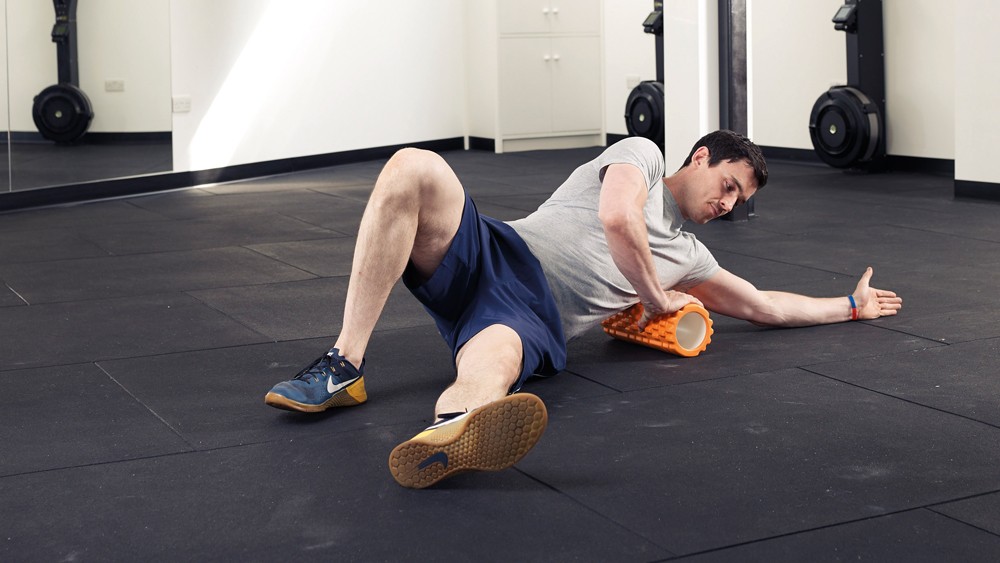
Lie on one side so that the roller is just below your armpit. Roll along your side until you get to the bottom of your ribs, then roll back the other way.
2. Upper back
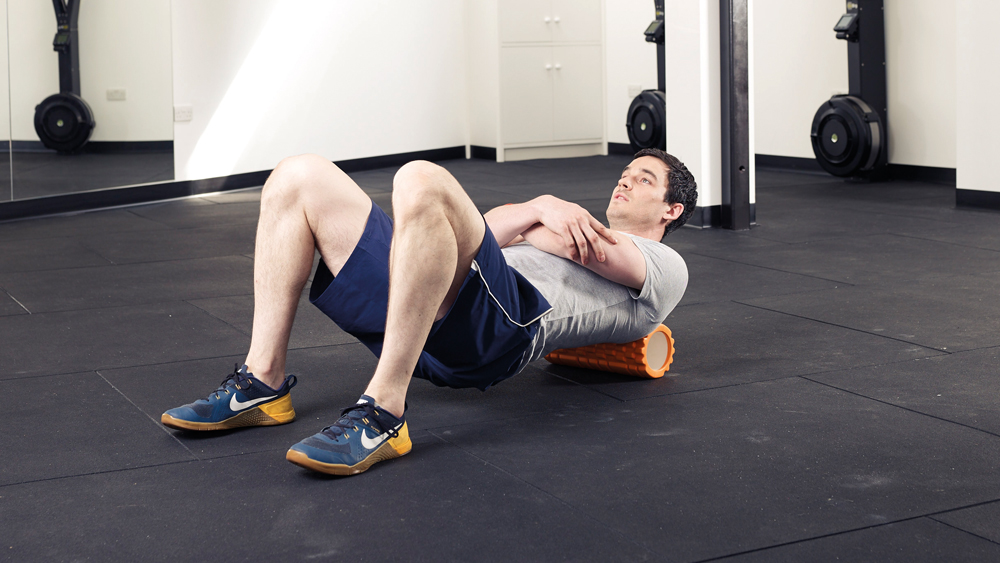
Position the roller under your upper back, then raise your hips off the floor so your back is flat. Roll down to your mid-back, then roll back up to the start.
3. Hamstrings
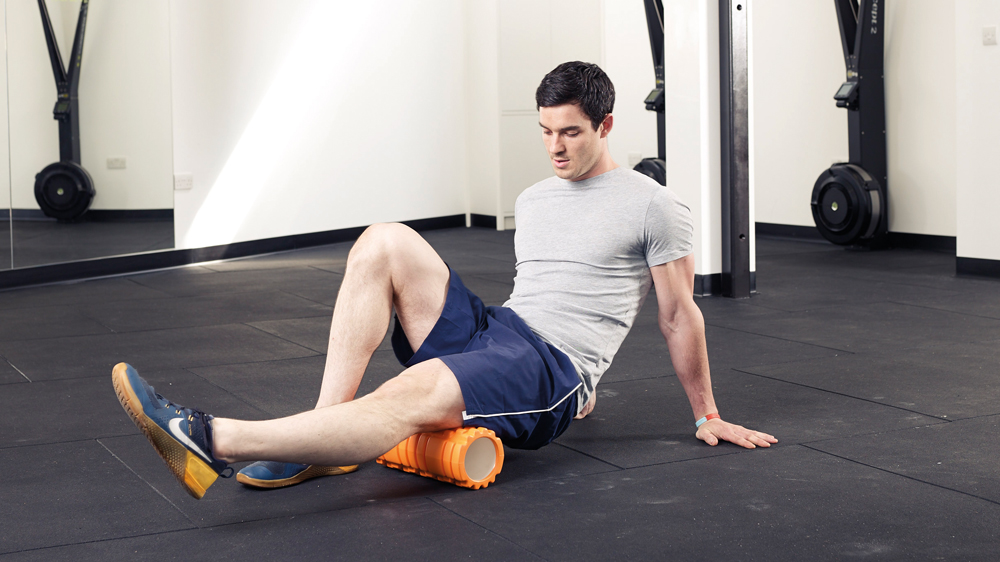
Position the roller just below your backside with your torso upright and your hands on the floor for balance. Roll all the way down to just above the knee, then roll all the way back again.
4. Glutes
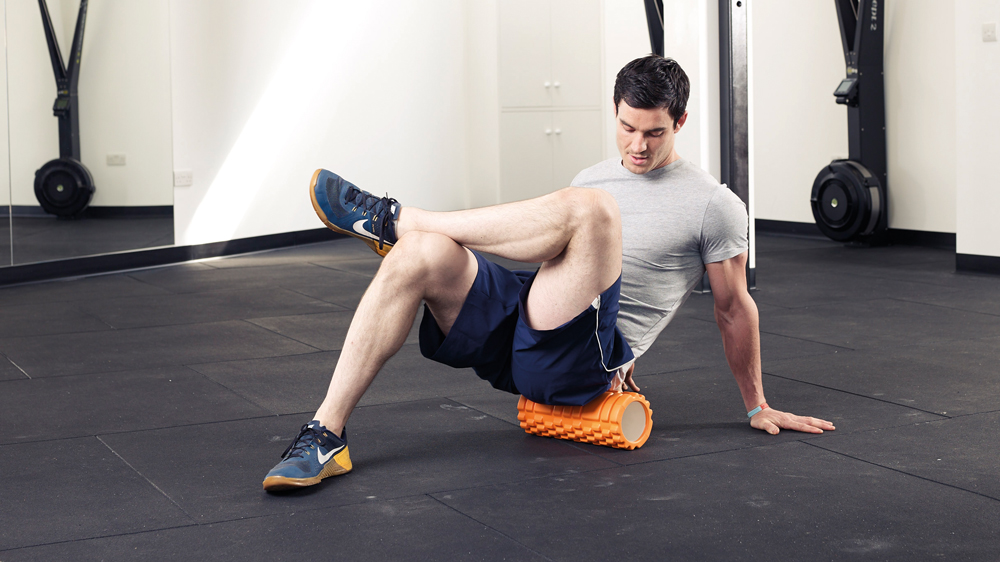
Sit on the roller with it positioned at the top of your backside. Place your palms on the floor for stability and cross one leg over the opposite knee. Roll back and forth along the buttock.
How To Warm Up Using A Foam Roller
Ahead of your next big match or tough weights workout, spend some time foam rolling your legs to improve your explosive power and increase your muscles’ range of motion. That’s the finding of new research reported in the Journal Of Strength And Conditioning Research, in which subjects’ vertical jump (to determine explosive power output) and sit-and-reach ability (to determine flexibility – you sit on the floor and extend your fingertips past your toes. More than 6cm shows good flexibility, according to the Australian College of Sport and Fitness, more than 17cm is excellent.) were tested before and after a bout of dynamic stretching combined with foam rolling. After rolling, their performance was improved for up to ten minutes, with the combo of both warm-ups more beneficial than either alone.
Preparing your muscles ahead of exercise is essential for better performance and to reduce your risk of injury. Prioritise these three drills to warm up the smart way.
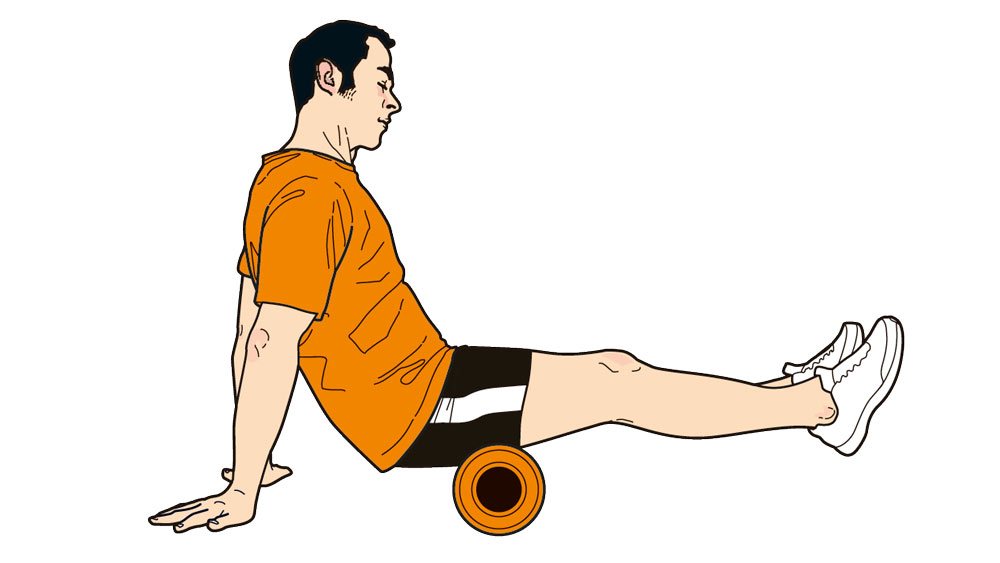
Balance on your hands with your hamstrings resting on the roller, then roll from the base of your glutes to your knees. Try pointing your feet inwards, outwards and forwards to hit all of your hamstrings.
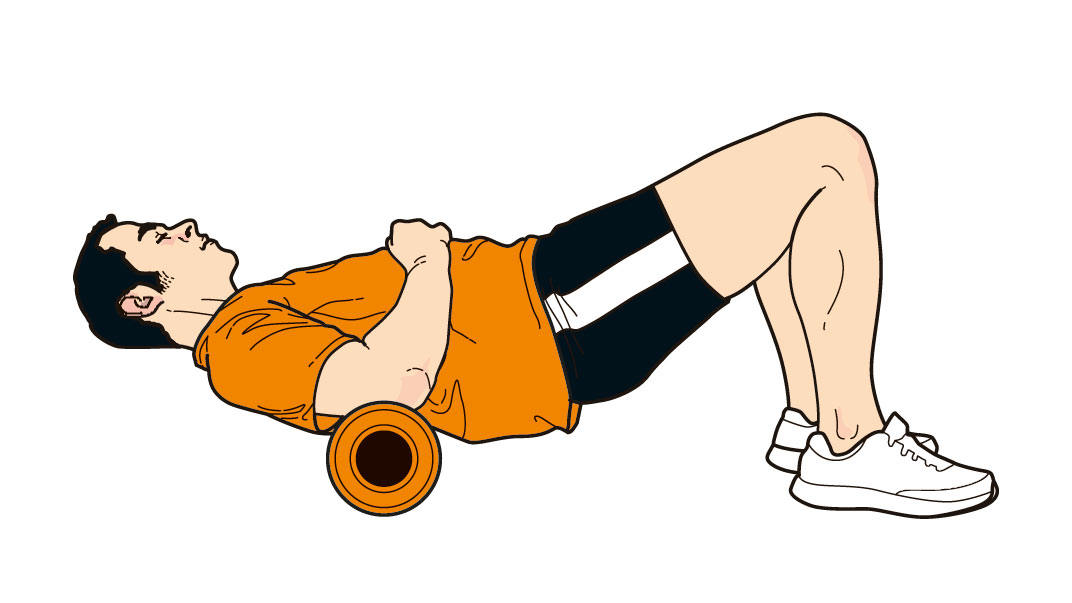
To hit the muscles around your shoulder blades – a must for injury-free bench-pressing – lie with the roller under your middle back. Elevate your glutes and cross your arms across your chest, then roll upwards along your back.
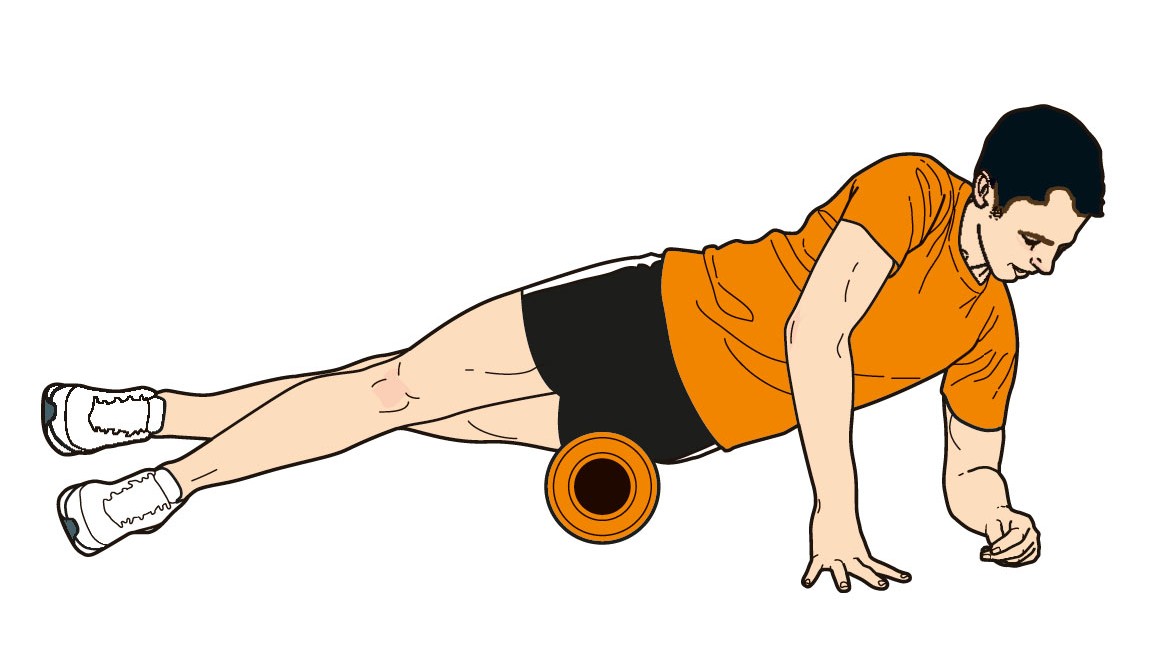
To tackle your iliotibial (IT) bands, lie on your side with the roller positioned just below your pelvis. Roll all the way down your thigh until you reach the knee. Stack the opposite leg on top to increase the pressure.
Six Foam Roller Exercises For Your Legs
1. Quads
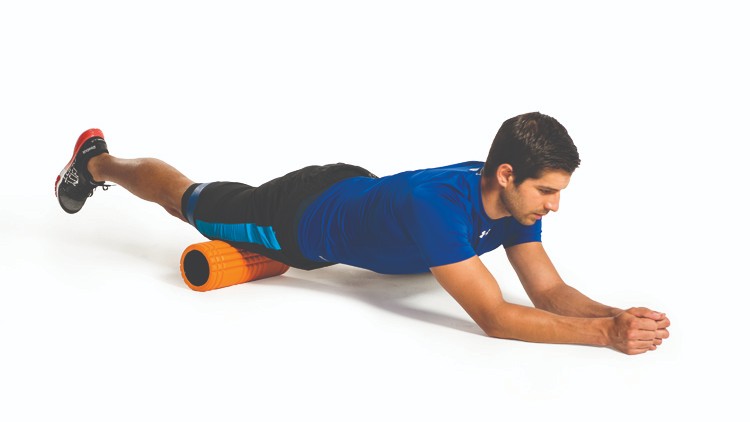
Mobility session 5-10 rolls each leg Recovery session 3-5min each leg
Lie on your front, resting on your elbows with both thighs on the roller. Use your elbows to move your body forward and backward, rolling from just above your kneecap to just below your pelvis. To target one leg, bring your other leg to your side. For increased pressure cross your legs so all your bodyweight is on one leg.
2. Hamstrings
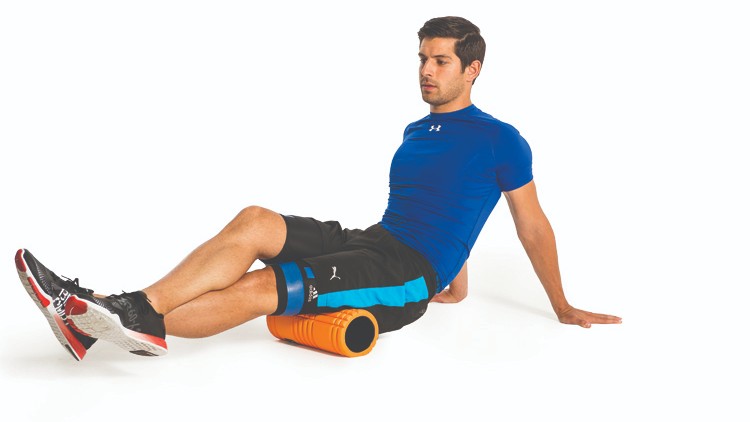
Mobility session 5-10 rolls each leg Recovery session 3-5min each leg
Sit with your hands on the floor supporting your weight and the backs of your legs resting on the roller. Start just above the knees and roll up to the top of your legs. Begin by rolling both legs, then cross your legs to target one at a time.
3. Glutes
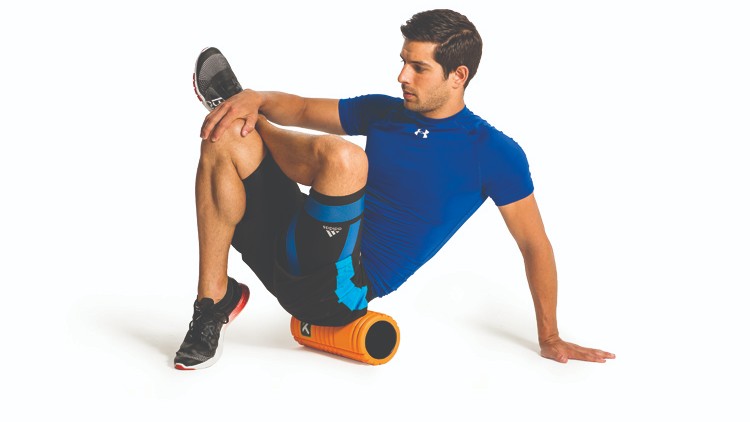
Mobility session 5-10 rolls each side Recovery session 3-5min each side
Sit on the roller with your hands on the floor supporting your weight. Because the glutes are such large muscles they require increased pressure. Target one side of your glutes by crossing that leg over the top of your other leg and roll up and down the muscle.
See related
- The Best Foam Rollers
- Essential Foam Rolling Exercises For Runners
- Yoga For Runners: Five Moves To Help You Recover After Long Runs
4. Calves
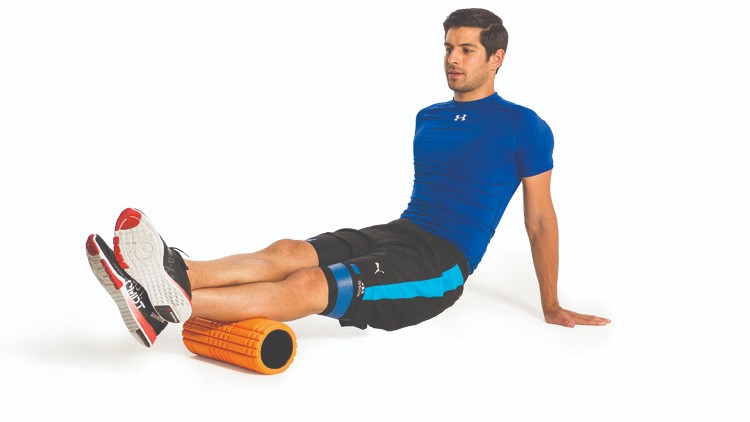
Mobility session 5-10 rolls each leg Recovery session 3-5min each leg
Sit down with your hands on the floor supporting your weight and the backs of your lower legs resting on the roller. Start just above the ankle and roll up to just below your knee. Begin by rolling both legs, then cross your legs over to target one at a time.
5. IT bands
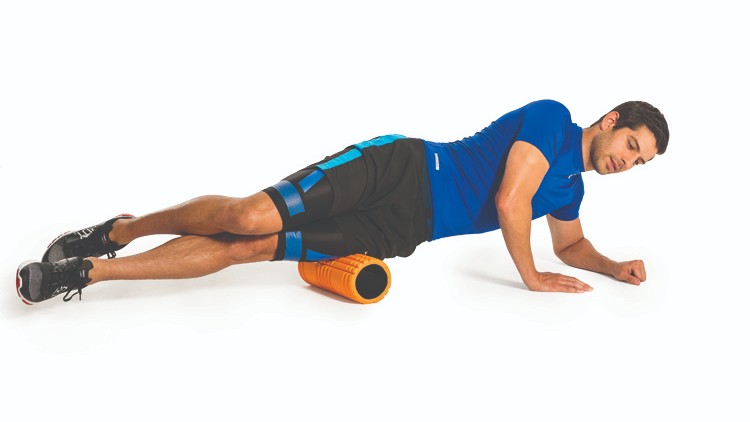
Mobility session 5-10 rolls each side Recovery session 3-5min each side
The iliotibial band runs from your glutes down the outside of your thigh to your knee. Lie on your side, supporting your weight on one elbow. Roll from just above your knee to the top of your leg, using your other leg to take some of your weight if you need to reduce the pressure.
6. Groin and adductors
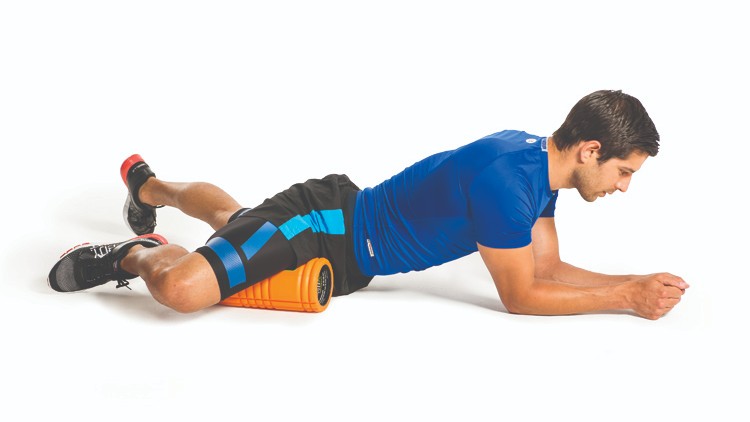
Mobility session 5-10 rolls each side Recovery session 3-5min each side
Lie on your front, resting on your elbows with the inside of one thigh on the roller and the other leg on the floor to support some of your weight. Roll from just above the knee up to the area between your groin and hip.

Nick Harris-Fry is a journalist who has been covering health and fitness since 2015. Nick is an avid runner, covering 70-110km a week, which gives him ample opportunity to test a wide range of running shoes and running gear. He is also the chief tester for fitness trackers and running watches, treadmills and exercise bikes, and workout headphones.
- Joe WarnerFormer editor of Men’s Fitness UK









